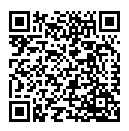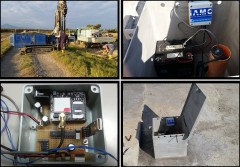The SWIS (Salt-Water-Intrusion-Sensor) Project arises from the need of a constant and continuous monitoring to better prevent damages due to salt wedge intrusion in certain areas (es.: Volturno). This event, which has been documented for several years now, mainly involves the deepest soils and can determine serious damage to the environment and agro-industry. The project’s development has been made possible thanks to an idea of Dr. Vincenzo Di Fiore and to the combination of different skills of the team selected by him. A perfect example of a project based on a multidisciplinary approach.
SWIS is a multi-head sensor able to:
• Monitor several physical parameters: Electrical Conductivity (EC in mS), Ambient Temperature (TA in °C), and Water Temperature (TW in °C). Furthermore the next upgrade will also provide: a solar panel for power supply, pH and Water Level measurement values (quantities of interest that determine the state of saline intrusions);
• Store the datalog in MySQL DB or alternatively in an integrated mass storage device microSD (2GB);
• Transmit the data through a GPRS shield TDGGSM_908/900;
• Transfer the data to a dedicated web space, obtaining plotted values in real time or in time intervals that best suit the requirements (about 24 updates per day) and that can be easily accessible from smartphones.
The hardware consists of an homemade assembled PCBA (printed circuit board assembly) controlled by the ATmega328P microcontroller (Atmel Corporation). The management software system was written in Wiring (open-source programming framework for microcontrollers, derived from C and C++; http://wiring. org.co) using a specific IDE (such as Eclipse or similar). For the moment we’ve considered 5 stations. Each station, can be in three different states: Online (green icon) – Coming Soon (yellow icon) – Offline (red icon) and it has a dedicated space in a MySQL database (Apache 2.2.22). The data are sent from the sensor via GPRS and the web communication occurs through http protocol; the device is a client that sends information to the server via socket tcp /ip and for the real time visualization, a web page by Java and PHP languages was created.
The power system is continuously monitored and when it falls below a certain threshold, it is sent a sms message to a given phone number, so that an operator will replace it.
For further information and more details please visit:
-
Official SWIS Project Website: http://www.geophysicslabcnriamc.altervista.org/
-
Real Time Data Section: http://www.geophysicslabcnriamc.altervista.org/real-time-data.php








